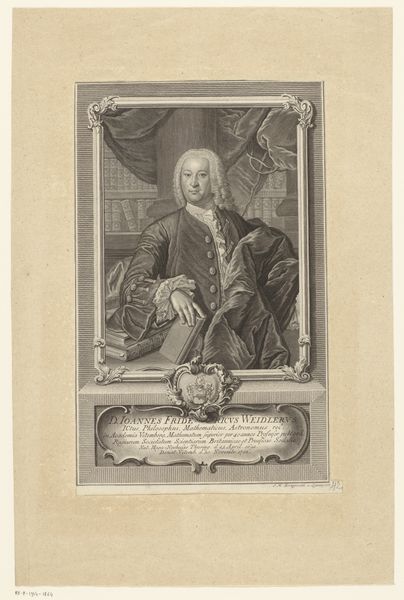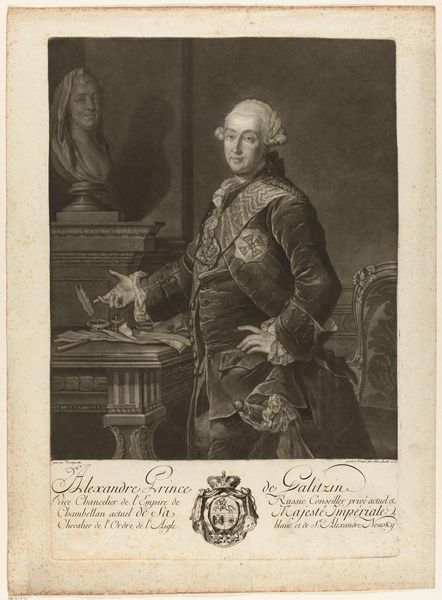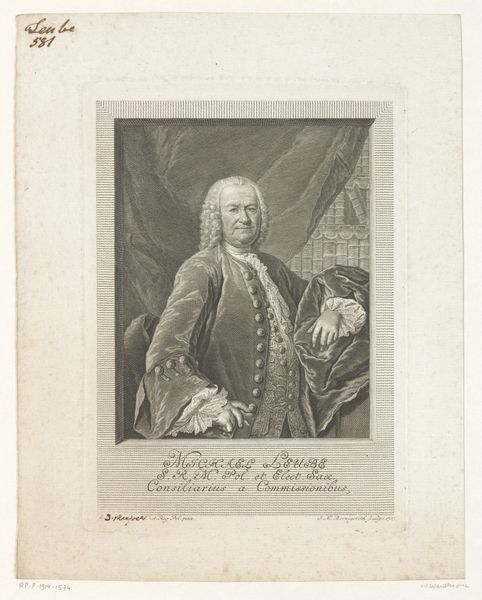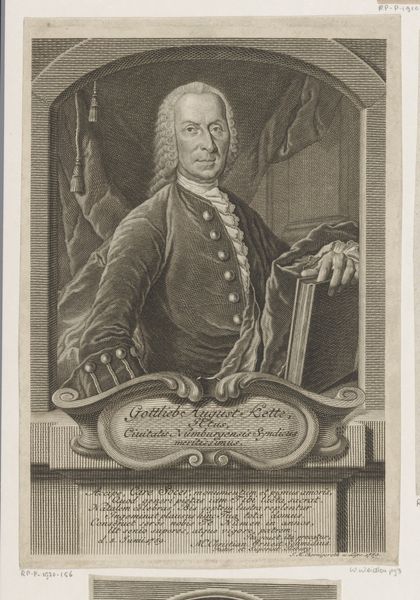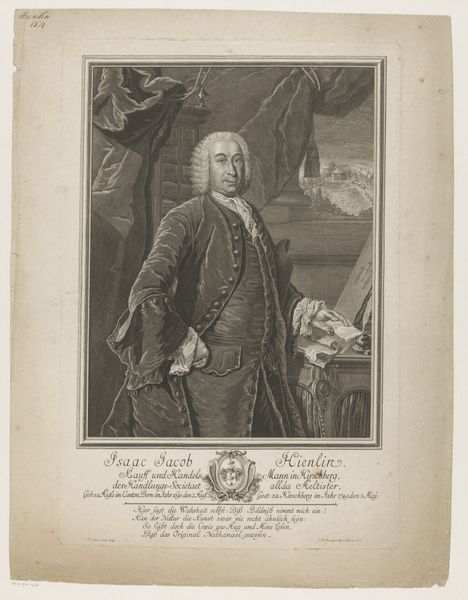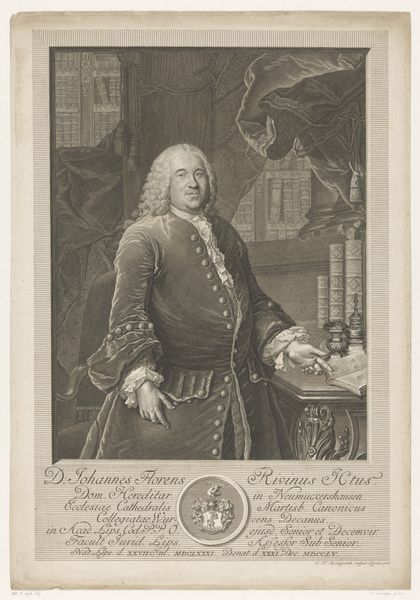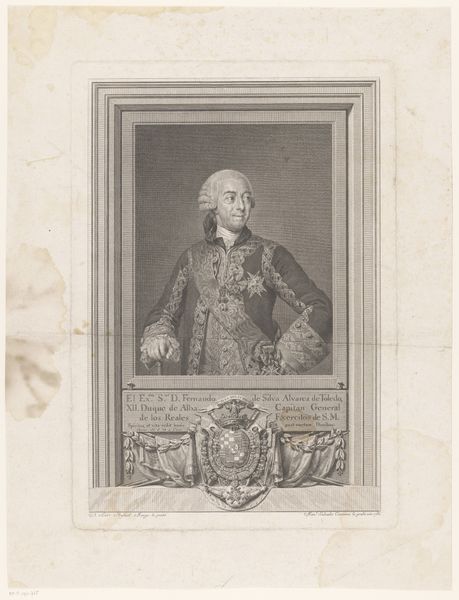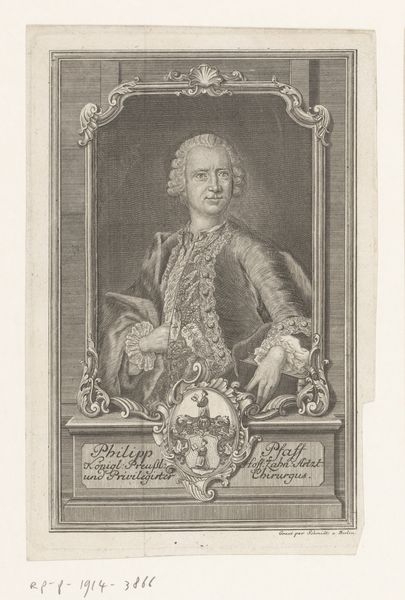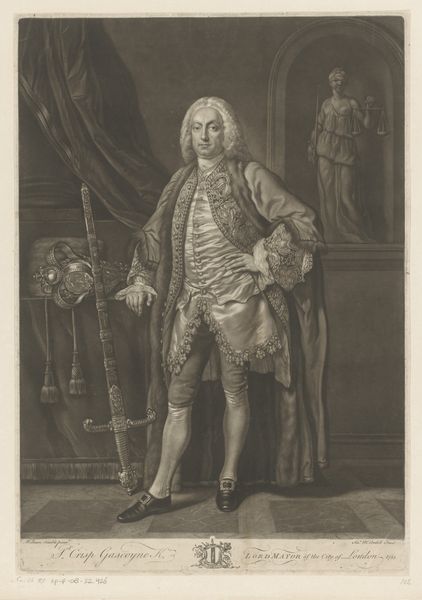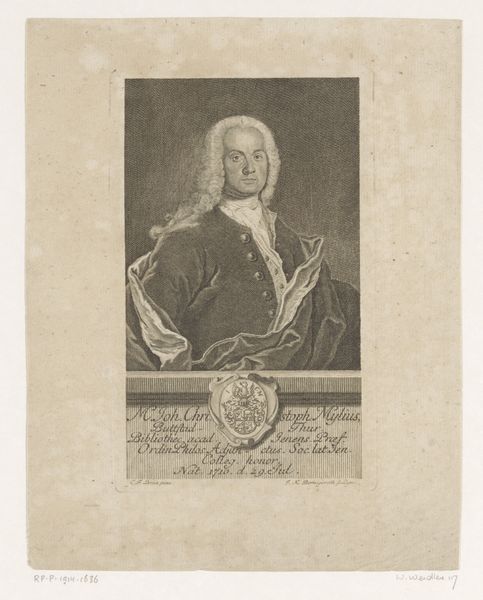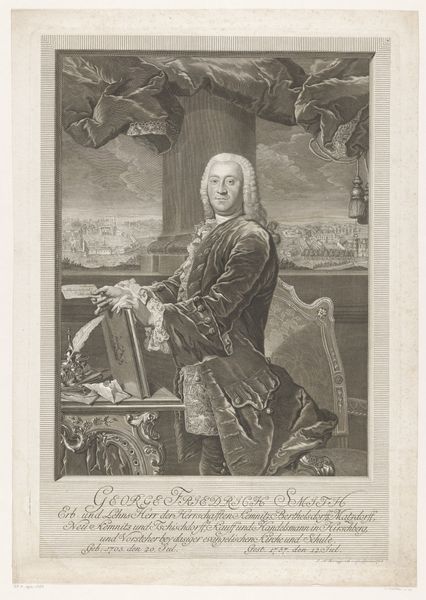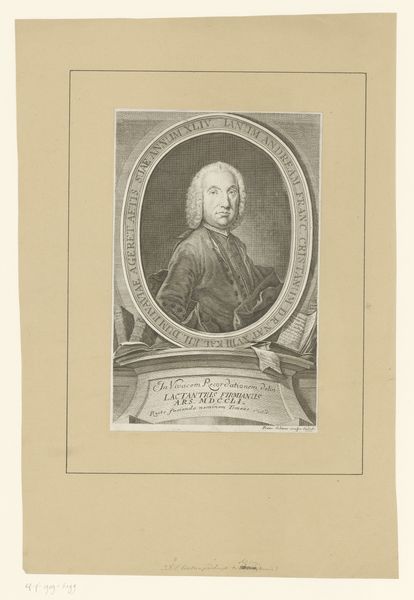
engraving
#
portrait
#
baroque
#
old engraving style
#
history-painting
#
engraving
Dimensions: height 204 mm, width 133 mm
Copyright: Rijks Museum: Open Domain
Curator: Hmm, I find this engraving, a portrait of Friedrich August von Harrach-Rohrau from 1750, strangely… wistful? There’s something melancholy in his posture. Editor: Melancholy, yes, but perhaps that's inherent in the form. The trappings of power are here: the imposing architecture, his aristocratic garb, and, of course, his very prominent coat of arms. But engraving as a medium lends itself to capturing not just an image of power but the weight of history, a reflection of legacy. Curator: That's astute. It’s a portrait that demands the viewer understand they are stepping into the theater of nobility. See how his hand rests on the tome before him? As if history itself bends to his touch. Do you suppose the engraver, Leopold Schmittner, meant to imbue him with such gravity? Editor: The engraver probably intended to convey a sense of timeless importance, the "eternal present" rulers strive for. It’s difficult for me to see it without a consideration of that inherent power imbalance. Aristocracy's legacy is one of extraction and exploitation, a fact glossed over by portraits like these. Curator: Perhaps, but what is an aristocrat if not also a mortal man? Do you allow him no shadow of interiority? I wonder, does this rendering capture some private sadness, however subtle? The endless burden of leadership, perhaps? Editor: That “burden” was often hoisted onto the backs of the very people they oppressed. We have to be critical when ascribing personal feelings onto figures elevated by systems of exploitation. This portrait, regardless of whatever intentions or creative liberties were at play in its making, stands as an artifact inextricably tied to those systems. Curator: A dour assessment, to be sure, but an essential perspective for contextualizing these images from history. Ultimately, art reminds us to ask what’s reflected when we peer into the looking glass, the knowns, and the infinite uncertainties, of it all. Editor: Absolutely. The beauty in observing artworks of the past rests in confronting these complicated legacies, allowing the past to inform, rather than dictate, our present.
Comments
No comments
Be the first to comment and join the conversation on the ultimate creative platform.
